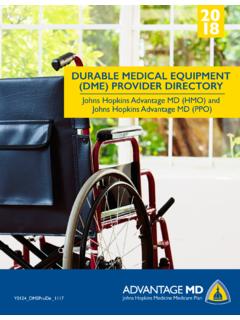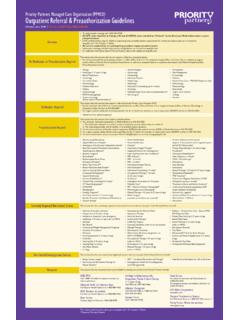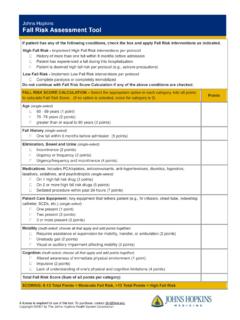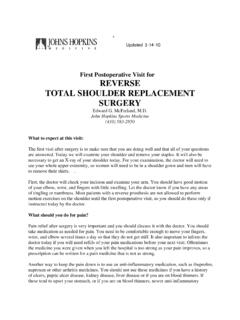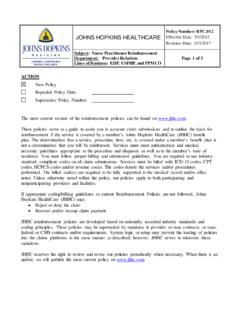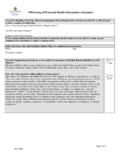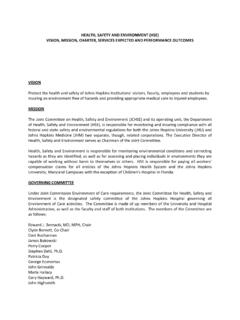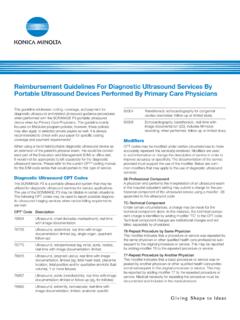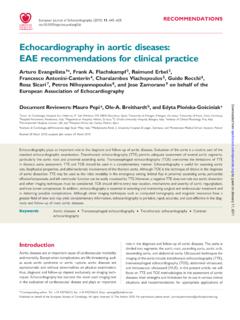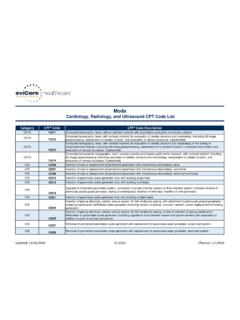Transcription of Understanding screening for Pulmonary Arterio-Venous ...
1 Understanding screening for Pulmonary Arteriovenous Malformations (PAVMs): Agitated Saline transthoracic Contrast Echocardiography (Agitated Saline Echo or Bubble Study) Circulatory System: Our circulatory system is made up of two primary types of vessels. Arteries and veins, arteries flow to organ systems to deliver oxygenated blood and veins deliver the deoxygenated blood (venous blood) back to the heart to be sent to the lungs to obtain more oxygen. This circuit in the body continues with every heartbeat as long as you are living. In a normal circulatory system, the arteries with the oxygenated blood, gets pumped to the organs, the organs receive the oxygenated blood and the arteries get smaller and smaller until they connect to a fine meshwork of capillaries or capillary bed.
2 The deoxygenated blood (delivered to the organ) flows into a vein from the capillaries/capillary bed and flows back to the right side of the heart. The circulation to the lungs is different. One of the primary jobs of the lungs is to take deoxygenated blood from the body and put oxygen into the blood to provide fuel for the rest of the body including organ systems to work properly. So venous blood (deoxygenated) flows into the lungs by veins where they get smaller and smaller, flow through the capillaries/capillary bed (picking up oxygen) and flow through arteries to the left side of the heart. The Pulmonary capillaries also serve as a filter for small particles such as tiny blood clots coming back from the body to prevent them from getting to the brain or other organs In the case of HHT, AVMs/ arteriovenous malformations are abnormal vessel connections in which an artery and vein connect directly and do not have capillaries/capillary bed.
3 AVMs can be found almost anywhere in the body: 1. lungs (PAVMs- Pulmonary arteriovenous malformations or lung AVMs) 2. brain (CAVMs-cerebral arteriovenous malformations or brain AVMs) 3. nose & skin-telangiectasia-smaller abnormal artery-vein connection Capillaries/capillary beds function to filter out blood clots and bacteria. If you have an untreated AVM in the lungs, you are at risk for blood clots and bacteria passing through this abnormal vessel, which can result in stroke or brain abscess. AVMs in the lungs and brain can cause serious medical complications including stroke, brain abscess and death. However, if a person is screened for and treated for AVMs, these serious complications can be avoided.
4 Tests to screen and diagnose HHT include brain MRI with contrast, Agitated Saline Echo (bubble study) and if the Agitated Saline Echo is positive, a chest CT with contrast will be done. Agitated Saline Echo Agitated Saline Echo (what we order at Johns Hopkins Hospital to screen for PAVMs). Other names for this test include: Bubble study, Agitated saline transthoracic contrast echocardiograpy/TTCE, Contrast Echo, Contrast Echocardiography. Our cardiologist and echo technicians do not use a contrast agent during this test. Agitated Saline is used to detect presence or absence of PAVMs (lung AVMs). The location of this test is the JHOC (Johns Hopkins Outpatient Center) 7th floor, Cardiology department or in the MRI recovery area for infants/younger children.
5 Once in the test area, an IV (intravenous access) will be inserted into your arm. A sonogram transducer with gel will be placed on your chest by the echo technician First you will have a complete examination of your heart s anatomy and function to ensure there are no cardiac problems. This takes ~15-20 minutes. Saline solution will be agitated by the nurse or the physician and injected into your IV site. The agitated saline bubbles go through your IV, right side of the heart and travel to and through the vessels within your lungs. Normally the lungs will filter out all of the saline bubbles or allow for very slow passage of the bubbles to the left side of the heart.
6 If you have a PAVM, the agitated saline bubbles will appear in the left side of the heart after 3-5 beats of the heart and the test would be considered positive for intrapulmonary (within the lung) shunting (blood moving through a vessel without a capillary bed). A chest CT with contrast would be recommended with this finding. A positive Agitated Saline Echo indicates that a person has a PAVM but does not give information about the size, location or number of PAVMs, or whether treatment is necessary. This test will be positive for micro PAVMs (too small to be seen by CT scan) as well as larger PAVMs detected on CT scan with contrast. All HHT patients with a positive Agitated Saline Echo whether micro AVMs or larger need antibiotics before any invasive procedure, including dental cleanings to avoid a brain abscess.
7 Previously treated PAVM patients will also require antibiotics. Physicians and dentists can refer to the American Heart Association Guidelines to determine proper antibiotic. If you have a negative Agitated Saline Echo-no bubbles (filtered out by a normal capillary bed) then you do not need a chest CT or antibiotic as described above. Inconclusive Agitated Saline Echo-bubbles appear immediately in the left heart (sometimes happens with a tiny opening in the wall between the upper chambers of the heart. This hole { a pfo} is present in ~20% of all people) then a chest CT with contrast would be recommended. Details concerning this finding should be discussed with the cardiologist and your HHT physician.
8 Agitated Saline Echo/Performed at an Outside Facility Should you choose to have the Agitated Saline Echo done at an outside facility-the cardiologist performing the test needs to know the goal of this test in HHT patients is to determine intrapulmonary shunting and not intra-cardiac shunting. Left- sided chamber bubbles, due to PAVM, appear 3-5 cardiac cycles (heartbeats) after they first appear in the right-sided chambers. Left-sided bubbles, due to intra-cardiac (heart) shunts, appear immediately after they first appear in the right-sided chambers. The ultrasound transducer must be left on the chest for at least 3-5 heartbeats to detect a PAVM References: Faughnan, , Palda, , Garcia-Tsao, G.
9 Et al. (2009). International Guidelines for Diagnosis and Management of Hereditary Hemorrhagic Telangiectasia, Journal of Medical Genetics, (pp. 1-59) Retrieved May 3, 2011, Shovlin, C., Bamford, K. and Wray, D., (2008). Post-NICE 2008: antibiotic prophylaxis Prior to dental procedures for patients with Pulmonary arteriovenous malformations (PAVMs) and hereditary haemorrhagic telangiectasia, British Dental Journal, Volume 205 No. 10, November 22, 2008, (pp 531-533) Retrieved May 3, 2011, Wilson, W., Taubert, K., Gewitz, M. et al. (2007). Prevention of Infective Endocarditis: Guidelines From the American Heart Association, Circulation, Journal of the American Heart Association, October 9, 2007,(pp 1736-1753) Retrieved May 3, 2011 Zukotynski, K.
10 , Chan, R., Chow, Chi-Ming, et al (2007), Contrast Echocardiography Grading Predicts Pulmonary Arteriovenous Malformations on CT, CHEST, February 22, 2007, (pp 1-28) Retrieved May 3, 2011 +html HHT Foundation website- gmr 07072011
